#fashion design education
Text
Fashion Designing Essentials: Education for Aspiring Designers
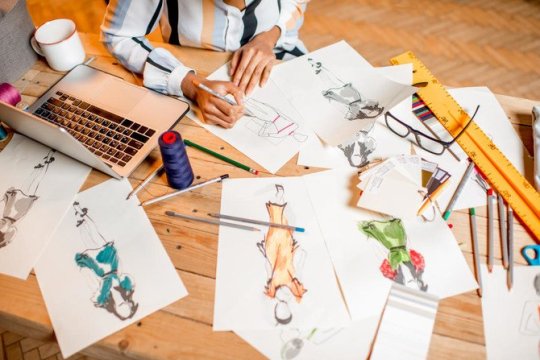
Fashion design is a dynamic and multifaceted field that requires a combination of creativity, skill, and industry knowledge. For aspiring designers, acquiring the essential education is crucial to navigating the complexities of the fashion industry and building a successful career. In this blog, we'll delve into the fundamental aspects of fashion designing education and explore how the Indian Institute of Fashion and Design (IIFD) provides aspiring designers with the essential tools and knowledge needed to thrive in this competitive industry.
Understanding Design Principles:
At the core of fashion design education are the fundamental design principles that form the basis of creative expression. Students at IIFD learn about color theory, composition, silhouette, proportion, and texture, gaining a deep understanding of how these elements come together to create visually compelling designs. Through practical exercises and hands-on projects, aspiring designers hone their skills in applying these principles to their own creations.
Developing Technical Skills:
In addition to creativity, aspiring designers must possess a strong foundation in technical skills to bring their designs to life. At IIFD, students receive comprehensive training in pattern-making, draping, sewing, and garment construction. From sketching their initial concepts to producing fully realized garments, students gain the practical expertise needed to translate their ideas into wearable fashion.
Exploring Fashion History and Trends:
A thorough understanding of fashion history and trends is essential for aspiring designers to contextualize their work and stay informed about industry developments. Through courses in fashion history and trend forecasting, students at IIFD gain insights into the evolution of fashion over time and learn how to identify emerging trends and influences. This knowledge equips them with the foresight to create designs that are both innovative and relevant to contemporary audiences.
Learning Business and Marketing Skills:
While creativity is a cornerstone of fashion design, aspiring designers must also possess a solid understanding of business and marketing principles to succeed in the industry. At IIFD, students learn about branding, merchandising, retailing, and entrepreneurship, gaining the skills needed to navigate the business side of fashion. By understanding the market landscape and consumer behavior, aspiring designers can effectively position their brands and products for success.
Join one of the Best Fashion Design Colleges in Kolkata like IIFD - Indian Institute of Fashion and Design in Salt lake Kolkata (@iifdkolkata) and embark on a transformative journey towards realizing your creative aspirations. Our comprehensive programs provide aspiring designers with the essential education, skills, and industry knowledge needed to thrive in the competitive world of fashion. Visit our website to learn more about our courses, admissions process, and how you can start your journey towards a successful career in fashion design at IIFD.
Conclusion:
Fashion designing education is essential for aspiring designers to develop the skills, knowledge, and expertise needed to succeed in the fast-paced and competitive fashion industry. At the Indian Institute of Fashion and Design (IIFD), we are committed to providing aspiring designers with the essential tools and education needed to unlock their creative potential and build successful careers in fashion design. With our comprehensive programs and industry-focused curriculum, we empower aspiring designers to turn their passion for fashion into reality.
#Fashion Education#Fashion Design#Fashion Designing#IIFD#IIFD Kolkata#careers#education#fashion design college#fashion design institute#fashion design course#fashion design education
0 notes
Text
Career Paths in Fashion Designing: Finding Your Niche

The world of fashion is a vast and diverse landscape, offering a myriad of opportunities for aspiring designers to carve out their own unique path. From haute couture to streetwear, fashion design encompasses a wide range of styles, specialties, and niches, each requiring its own set of skills, passion, and expertise. In this article, we embark on a journey of self-discovery, exploring the various career paths in fashion designing and helping you find your niche in this dynamic industry.
Haute Couture: Crafting Luxury and Tradition
For those with a penchant for luxury and craftsmanship, haute couture offers a prestigious and rewarding career path. Haute couture designers create one-of-a-kind, made-to-measure garments for high-profile clients, drawing inspiration from art, culture, and history. With meticulous attention to detail and uncompromising standards of quality, haute couture designers epitomize the pinnacle of fashion excellence.
Ready-to-Wear: Bridging Fashion and Accessibility
Ready-to-wear, or prêt-à-porter, represents the intersection of fashion and accessibility, offering stylish and trend-driven garments for the mass market. Designers in this field must balance creativity with commercial viability, creating collections that appeal to a wide range of consumers while staying true to their brand aesthetic. Ready-to-wear designers often work for established fashion houses or launch their own labels, catering to diverse audiences with their innovative designs.
Streetwear: Embracing Urban Culture and Subversion
Streetwear has emerged as a dominant force in contemporary fashion, reflecting the cultural zeitgeist and subverting traditional notions of style. Streetwear designers draw inspiration from youth culture, music, and urban landscapes, creating clothing that resonates with a diverse and discerning audience. With its emphasis on authenticity and self-expression, streetwear offers a vibrant and dynamic career path for designers looking to make a bold statement.
Sustainable Fashion: Designing with Purpose and Impact
In recent years, sustainability has become a driving force in the fashion industry, prompting designers to rethink their approach to design and production. Sustainable fashion designers prioritize ethical sourcing, eco-friendly materials, and responsible manufacturing practices, creating clothing that is both stylish and environmentally conscious. As the demand for sustainable fashion continues to grow, so too do the opportunities for designers to make a positive impact on the world.
Join us at IIFD Kolkata, The best Fashion Design College in Kolkata – where creativity meets opportunity, and dreams take flight. Our comprehensive programs in fashion design are designed to help you discover your passion, hone your skills, and chart your course towards a successful and fulfilling career in the industry. From haute couture to sustainable fashion, we offer specialized training and expert guidance to help you thrive in your chosen niche.
Conclusion:
In the vast and ever-evolving world of fashion, finding your niche is not just about choosing a career path – it's about discovering your true passion, embracing your unique perspective, and unleashing your creativity on the world stage. Whether you aspire to create luxury couture gowns, innovative streetwear, or sustainable fashion, there is a place for you in this dynamic industry. With determination, dedication, and the right guidance, you can turn your passion for fashion into a rewarding and fulfilling career. So, embrace the journey, follow your instincts, and let your creativity soar – the world of fashion is waiting for you to make your mark.
#Career Paths#Careers#Fashion Designing#Fashion Design#IIFD#IIFD Kolkata#education#fashion design college#fashion design education#fashion designing courses
0 notes
Text
Fashion Design Colleges: How to Find the Perfect Fit for You
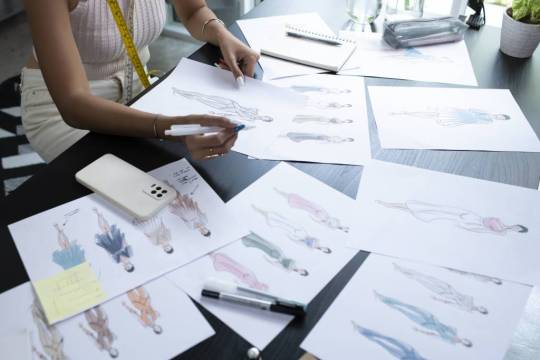
Choosing the right fashion design college is a significant decision that can shape your future career in the dynamic and competitive world of fashion. With numerous options available, finding the perfect fit can be challenging. In this blog post, we'll explore essential factors to consider when selecting a fashion design college and provide guidance on how to find the ideal fit for you, with insights from IIFD Kolkata, a leading institution in fashion design education.
Define Your Goals and Interests:
Before researching fashion design colleges, take some time to reflect on your goals, interests, and aspirations in the field of fashion design. Consider what aspects of fashion design excite you the most—whether it's garment construction, textile design, fashion merchandising, or sustainable fashion. Understanding your passions and career objectives will help you narrow down your options and identify colleges that align with your interests.
Research Accredited Institutions:
When evaluating fashion design colleges, it's essential to prioritize accredited institutions that meet recognized standards of quality and excellence in education. Look for colleges that are accredited by reputable accrediting bodies or affiliated with recognized universities or educational organizations. Accreditation ensures that the college meets rigorous academic standards and provides students with a high-quality education.
Explore Curriculum and Course Offerings:
Take the time to research the curriculum and course offerings of each fashion design college you're considering. Look for programs that offer a comprehensive and diverse range of courses relevant to your interests and career goals. Consider factors such as class size, faculty expertise, and access to specialized resources and facilities. Additionally, explore opportunities for internships, study abroad programs, and industry collaborations that enhance the learning experience.
Assess Faculty and Resources:
The faculty and resources available at a fashion design college play a crucial role in shaping your educational experience. Research the credentials and expertise of the faculty members, including their industry experience, professional accomplishments, and teaching approach. Additionally, assess the college's facilities, equipment, and resources, such as design studios, sewing labs, computer labs, and libraries. A supportive and well-equipped learning environment can enhance your education and skill development.
Consider Location and Campus Culture:
The location and campus culture of a fashion design college can also influence your overall experience as a student. Consider factors such as proximity to industry hubs, cultural opportunities, and lifestyle amenities when evaluating colleges. Additionally, research the campus culture, student demographics, and extracurricular activities to ensure that the college aligns with your preferences and values. Visiting campuses, attending open houses, and talking to current students can provide valuable insights into campus life.
Seek Opportunities for Networking and Career Development:
Networking and career development opportunities are essential aspects of the college experience, especially in the fashion industry. Look for colleges that offer networking events, career fairs, and industry partnerships that connect students with professionals in the field. Additionally, explore internship programs, job placement services, and alumni networks that provide valuable opportunities for experiential learning and career advancement.
Conclusion:
Finding the perfect fashion design college requires careful research, self-reflection, and consideration of various factors. By defining your goals, researching accredited institutions, exploring curriculum and resources, assessing faculty and campus culture, and seeking networking opportunities, you can identify the college that best fits your needs and aspirations. With IIFD Kolkata's commitment to excellence in fashion design education, personalized mentorship, and industry-relevant curriculum, you can embark on a transformative educational journey and realize your dreams in the dynamic world of fashion. Join the best Fashion Designing College in Kolkata, IIFD Salt lake Kolkata and take the first step towards a successful career in fashion design.
#iifd kolkata#iifd#fashion education#fashion designing#fashion design#fashion design education#fashion desingers#careers#education#fashion#kolkata
0 notes
Text
Get a Head Start in Fashion Design Education

Embarking on a career in fashion design is an exciting and rewarding journey. However, in an industry known for its dynamism and creativity, it's crucial to get a head start in fashion design education to stay ahead of the curve. Whether you're a budding designer or someone looking to switch careers, a solid foundation in fashion education can be the key to unlocking your creative potential and building a successful career.
Early Exploration and Passion Discovery:
The journey begins with early exploration and the discovery of your passion for fashion. Many successful designers started sketching, experimenting with fabrics, and developing an eye for style from a young age. If you find yourself constantly drawn to fashion magazines, sketching outfits, or experimenting with your wardrobe, it might be a sign that a career in fashion design is your true calling.
High School Preparations:
High school is the perfect time to start preparing for a future in fashion design. Focus on art and design courses to build a solid foundation. Participate in extracurricular activities such as fashion clubs or sewing classes to gain hands-on experience. Attend fashion-related events and keep a portfolio of your sketches and designs, showcasing your evolving style and creativity.
Research and Choose the Right Fashion School:
As you approach the end of high school, delve into researching and selecting the right fashion school for your education. Look for institutions that align with your career goals, offering comprehensive programs, experienced faculty, and opportunities for industry exposure. Consider factors such as location, reputation, and alumni success stories when making your decision.
Apply for Fashion Design Programs:
Once you've identified your dream fashion school, it's time to apply for their fashion design programs. Pay close attention to application requirements and deadlines. Submit a portfolio that reflects your creativity, passion, and growth as a designer. A strong portfolio can be a game-changer in securing admission to a reputable fashion school.
Immerse Yourself in the Fashion Community:
While pursuing your education, immerse yourself in the fashion community. Attend fashion events, network with industry professionals, and seek internships or part-time positions in the field. Building connections and gaining real-world experience will complement your academic learning and provide valuable insights into the industry.
Ready to take the first step towards a successful career in fashion design? Begin your journey by exploring our Fashion Design Programs. Enroll at the best fashion designing college in India, IIFD - Indian Institute of Fashion & Design, and take the first step towards turning your passion into a thriving career.
Discover our comprehensive fashion courses, distinguished faculty, and state-of-the-art facilities that will shape your creative future. Join IIFD to cultivate your creativity, refine your skills, and set the foundation for a thriving career in the dynamic world of fashion.
Enroll now to get a Head Start in Fashion Design Education!
#fashion#fashion design education#fashion education#fashion designing college#iifd#iifd chandigarh#careers#fashion design#fashion designing courses#education#designing
0 notes
Text
The Role of a Fashion Merchandiser

Fashion is an ever-evolving industry where style, trends, and consumer preferences fluctuate at a rapid pace. To navigate this dynamic landscape and ensure that the right garments reach the right consumers, the role of a fashion merchandiser is essential. Fashion merchandisers are the behind-the-scenes experts who bridge the gap between design and retail, shaping the industry in ways that go far beyond just clothing.
Let's explore the multifaceted role of a fashion merchandiser and their impact on the world of fashion.
Defining Fashion Merchandising
Fashion merchandising is a critical component of the fashion industry that involves the planning, purchasing, and selling of garments and accessories. It encompasses various elements, including market research, trend analysis, inventory management, pricing strategies, and visual merchandising. Fashion merchandisers are responsible for ensuring that products are available to consumers when and where they want them.
Market Research and Trend Analysis
One of the primary responsibilities of a fashion merchandiser is to stay ahead of market trends. They monitor consumer preferences, cultural shifts, and emerging fashion trends. By conducting market research and trend analysis, merchandisers can guide their teams in making informed decisions about what products to offer.
Buying and Inventory Management
Fashion merchandisers are responsible for selecting the products that will be available in stores. This involves working closely with designers, manufacturers, and suppliers to determine which items to purchase. They must consider factors such as consumer demand, pricing, and the retail environment. Once products are selected, they manage inventory to ensure that the right quantities are available.
Pricing Strategies
Pricing is a crucial element in the fashion industry. Fashion merchandisers determine the pricing strategies for products based on market demand, production costs, and the competitive landscape. They must strike a balance between profitability and affordability to attract and retain customers.
Visual Merchandising
Fashion is not just about the products; it's also about the presentation. Fashion merchandisers are responsible for creating appealing visual displays in stores and online. They use their creative skills to design eye-catching store layouts, window displays, and online storefronts that entice shoppers and reflect the brand's image.
Assortment Planning
Assortment planning involves deciding which products will be included in a collection and how they will be organized. Fashion merchandisers must ensure that the assortment meets customer expectations and aligns with the brand's identity. They consider factors such as style, color, size, and price to create a well-rounded product offering.
Sales Analysis and Forecasting
Fashion merchandisers continuously analyze sales data to track product performance and customer behavior. They use this data to make adjustments to future buying and inventory management. This ongoing analysis helps ensure that products remain in line with market demand.
Marketing and Promotion
Fashion merchandisers work closely with marketing teams to develop promotional strategies and campaigns. They understand the products they are selling and use their knowledge to create effective marketing materials and sales initiatives.
Seasonal Planning
In the fashion industry, seasonal planning is essential. Fashion merchandisers must plan well in advance to ensure that products are available for specific seasons or occasions. This planning involves identifying which products will be in demand and coordinating with suppliers to meet deadlines.
The Impact of Fashion Merchandisers
The role of a fashion merchandiser is dynamic and multifaceted, with a significant impact on the fashion industry. By understanding market trends, making informed buying decisions, managing inventory, and creating enticing shopping experiences, they contribute to the success of fashion brands and the satisfaction of consumers.
Fashion merchandisers act as the liaisons between designers, manufacturers, retailers, and consumers, ensuring that products reach the right audience at the right time. They play a pivotal role in shaping the style and strategy of fashion brands, ultimately influencing the ever-evolving world of fashion. As fashion continues to evolve, the role of a fashion merchandiser remains an indispensable force in the industry, balancing creativity and commerce in pursuit of style and success.
You can begin your journey towards your dream career in fashion design today by taking the first step. Take advantage of the opportunity to study at one of the top fashion designing colleges in India, IIFD - Indian Institute of Fashion & Design (@iifd) and unlock your potential.
#fashion designing#fashion design careers#iifd#iifd chandigarh#fashion courses#fashion education#fashion design education#career in fashion#career in fashion design#fashion merchandiser#fashion merchandiser career#fashion design institute#careers#education
0 notes
Text
Internships and Mentorships in Fashion Education
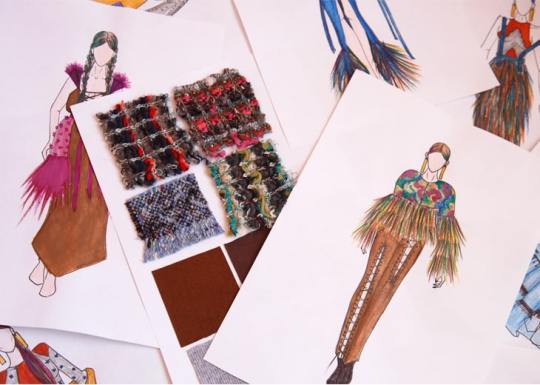
Fashion is a dynamic and ever-evolving industry that thrives on creativity, innovation, and the relentless pursuit of excellence. For aspiring fashion professionals, education is a crucial stepping stone, but it's through internships and mentorships that they bridge the gap between theory and practice, gaining invaluable real-world insights and experiences. In this article, we will explore the pivotal role of internships and mentorships in fashion education and how they shape the future of fashion leaders.
The Art of Learning by Doing
While classroom education provides a solid foundation in design principles, textiles, and fashion history, it's real-world experiences that breathe life into this knowledge. Internships and mentorships offer students the opportunity to apply what they've learned, immersing themselves in the fast-paced, competitive world of fashion.
Internships: Gaining Practical Experience
Internships are a direct avenue for students to get a taste of the fashion industry. They typically involve working with established fashion houses, design studios, or retailers. Here's how internships contribute to a student's growth:
Hands-on Experience: Interns get to work on real projects, from assisting in design and production to handling marketing and public relations tasks. This practical exposure is invaluable in understanding how the industry functions.
Networking: Internships provide access to an extensive network of industry professionals. Building connections and relationships during internships can lead to future job opportunities.
Skill Development: Interns develop critical skills like time management, problem-solving, and adaptability. They also learn how to work as part of a team, crucial in the collaborative world of fashion.
Industry Insights: Being on the ground allows interns to witness the industry's challenges and opportunities firsthand. This knowledge is not only informative but also prepares them for the realities of fashion.
Mentorships: Guided Learning and Personal Growth
Mentorships, on the other hand, are more focused on individualized learning and guidance. Here's what makes mentorships an essential component of fashion education:
Personalized Feedback: Having a mentor provides a unique opportunity for students to receive personalized feedback on their work. This feedback is instrumental in refining their skills and developing their unique style.
Long-term Development: Mentorships often extend beyond a semester, allowing for long-term growth. Mentors can help students navigate their academic and professional journeys.
Industry Wisdom: Mentors are typically seasoned professionals who offer their wealth of experience. They share not only technical knowledge but also insights into the nuances of the industry.
Confidence Building: Mentors encourage and support students, helping them build confidence in their abilities. This is crucial in an industry where self-assurance is often the driving force behind success.
Combining the Best of Both Worlds
While internships and mentorships are distinct, they're not mutually exclusive. In fact, many fashion education programs encourage students to blend the benefits of both. By interning and being mentored, students gain a holistic understanding of the fashion landscape.
Future Fashion Leaders: Nurtured Through Experience
In the competitive world of fashion, internships and mentorships are often the launchpads for successful careers. They provide a glimpse of what it takes to thrive in the industry, help students build connections, and offer the guidance necessary to succeed.
Fashion education is not just about learning; it's about becoming a part of the industry's vibrant ecosystem. Internships and mentorships bridge the gap between academia and reality, and they're the nurturing grounds for the fashion leaders of tomorrow.
Enroll in one of the top fashion design colleges in India. Fashion design program at IIFD is create to learn more about the evolution of fashion design through the decades and start your journey towards a career in the fashion industry.
So, to aspiring fashion professionals, remember that it's not just the degree you earn but the experiences you gain through internships and mentorships that will define your future in fashion. Embrace these opportunities, learn from them, and let them shape you into the innovative, creative, and successful fashion leaders of tomorrow.
#Internships and Mentorships#Fashion Education#Fashion Design Education#fashion design college#fashion design course#iifd#education#iifd chandigarh#internships#Mentorships#internships fashion
1 note
·
View note
Text
Indian Institute of Fashion and Design - IIFD: A Leading Fashion Design College
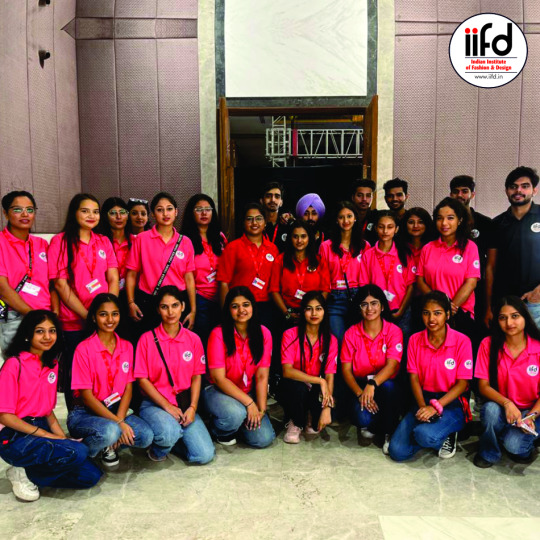
The world of fashion is a dynamic, ever-evolving realm where creativity knows no bounds. To embark on a successful career in fashion, one needs the right education, guidance, and an institution that stands out in the crowd. The Indian Institute of Fashion and Design (IIFD) is one such beacon of excellence, a leading fashion design college that has consistently been a first choice for aspiring fashion designers. Let's explore why IIFD has garnered this reputation and why it is indeed a leading institution in the field of fashion design.
A Legacy of Excellence:
Established in 2004, IIFD has a rich history of fostering creativity, nurturing talent, and providing a comprehensive education in fashion design. Over the years, it has gained recognition and acclaim as a pioneer in fashion education. IIFD is more than just an educational institution; it's a place where dreams are transformed into reality.
A Comprehensive Curriculum:
One of the strengths of IIFD is its comprehensive and well-rounded curriculum. The programs offered cover a wide range of topics, including design principles, textiles, pattern making, fashion business, and marketing. Students receive a holistic education that prepares them for various roles within the fashion industry. It's not just about creating clothing; it's about understanding the entire fashion ecosystem.
Experienced and Industry-Relevant Faculty:
The faculty at IIFD is not just academically qualified; they are experienced industry professionals. Their real-world insights, knowledge, and mentorship provide students with a valuable perspective on what it takes to succeed in the fashion world. The faculty's industry connections also open doors for students, providing opportunities for internships and industry exposure.
State-of-the-Art Facilities:
IIFD's campus is equipped with state-of-the-art facilities that provide an inspiring environment for creative exploration. Design studios, computer labs, and a well-stocked library offer students the resources they need to experiment, innovate, and bring their design ideas to life.
Industry Exposure and Real-World Experience:
The fashion industry is not confined to textbooks and theory; it's a dynamic, real-world arena. IIFD understands this and consistently strives to expose its students to the industry through collaborations, internships, and participation in fashion events and shows. This hands-on experience provides students with insights into the professional world and helps them build a network within the industry.
Global Perspective:
Fashion is a global phenomenon, and IIFD ensures its students have an international perspective. The institute's affiliations with international organizations and exchange programs enable students to explore the global fashion landscape, understanding trends and influences from around the world. This global outlook prepares students to navigate the interconnected world of fashion.
Encouraging Innovation and Creativity:
IIFD places a strong emphasis on celebrating innovation and encouraging creativity. It's a place where students are empowered to push boundaries, experiment with unconventional ideas, and develop their unique design voices. It's not just about following trends; it's about setting them.
Alumni Success Stories:
The true measure of an institution's success lies in the achievements of its alumni. IIFD's graduates have gone on to make remarkable contributions to the fashion world. They have launched their own brands, worked with renowned fashion houses, and become influencers in the industry. These success stories are a testament to the quality of education and guidance provided by the institute.
In conclusion, the Indian Institute of Fashion and Design (IIFD) is not just one of the best fashion design colleges in India; it is a gateway to creativity, a bridge to opportunity, and a platform for dreams to take flight. For those with a passion for fashion, an eye for design, and a dream of success, IIFD is not just a college; it's the first step toward a journey filled with creativity, innovation, and achievement in the world of fashion.
#iifd#fashion design college#careers#education#fashion design education#fashion design course#career#iifd chandigarh#fashion design#fashion design institute#fashion college#fashion designing
0 notes
Text
Fashioning Success: The Impact of Quality Fashion Design Courses
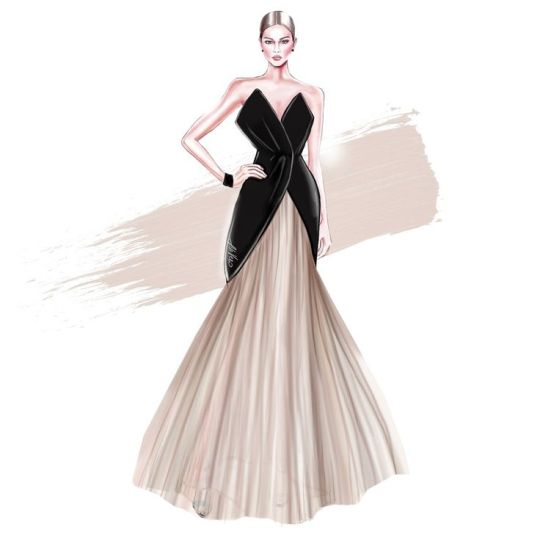
Fashion is more than just clothing; it's a form of artistic expression, cultural representation, and a multi-billion-dollar industry that influences the world. Behind every stunning garment, there's a fashion designer who has honed their skills through quality education.
In this article, we'll explore how quality fashion design courses can have a profound impact on your journey to success in the fashion industry.
Crafting Creative Excellence
Quality fashion design courses serve as the crucible where creativity is refined and transformed into tangible designs. They provide students with a structured environment to explore and expand their creative horizons. Through these courses, aspiring designers learn to:
Sketch and Illustrate: Fashion design begins with an idea captured on paper. Students are trained to sketch and illustrate their concepts, developing a visual language to communicate their design visions.
Experiment with Fabrics: Understanding the characteristics and properties of various fabrics is essential. Courses teach students how to select the right materials to bring their designs to life.
Pattern-Making: Precision is paramount in fashion. Courses delve into pattern-making, ensuring that designs translate seamlessly from concept to fabric.
Garment Construction: Learning to construct garments involves the practical application of design principles. Courses guide students through the intricacies of sewing, stitching, and assembly.
Understanding the Fashion Ecosystem
The fashion industry is a complex ecosystem that extends far beyond the runway. Quality fashion design courses provide a comprehensive education that goes beyond the creative aspects, offering insights into the entire fashion ecosystem:
Fashion History and Theory: Understanding the historical and cultural contexts of fashion is crucial. It allows designers to infuse their creations with depth and meaning, connecting with audiences on a deeper level.
Consumer Behavior: In the age of fast fashion, understanding consumer behavior is vital. Courses teach students how to anticipate and respond to changing consumer preferences.
Market Trends: Keeping up with the latest fashion trends is essential for designers. Courses provide students with the tools to identify and adapt to emerging trends.
Sustainability: Ethical and sustainable fashion is gaining importance. Quality courses educate students on sustainable practices and materials, fostering responsible design.
Real-World Experience
Quality fashion design courses often incorporate real-world experiences to prepare students for the industry's demands:
Internships: Many programs facilitate internships with fashion houses, designers, or retail companies. These internships offer invaluable hands-on experience and networking opportunities.
Fashion Shows and Exhibitions: Students are encouraged to participate in fashion shows and exhibitions. These events provide a platform to showcase their designs and connect with industry professionals.
Industry Connections: Courses with strong industry connections can offer guest lectures, industry partnerships, and networking events, helping students build valuable relationships.
Mentorship and Guidance
Experienced faculty members with extensive industry knowledge are a hallmark of quality fashion design courses. Their mentorship and guidance can:
Accelerate Growth: Learning from seasoned professionals can accelerate a student's growth and provide insights into industry best practices.
Offer Practical Advice: Instructors often share practical advice, tips, and tricks that can't be found in textbooks.
Provide Networking Opportunities: Faculty members may have extensive networks within the fashion industry, which can open doors for students.
Building a Professional Portfolio
Quality fashion design courses emphasize the importance of creating a professional portfolio. This portfolio becomes a designer's calling card, showcasing their skills, creativity, and growth. A well-curated portfolio is essential for securing internships and job opportunities.
Conclusion: Paving the Path to Success
Fashion design is a competitive field that demands a unique blend of creativity, technical proficiency, and industry knowledge. Quality fashion designing courses provide aspiring designers with the tools, experiences, and guidance needed to thrive in this dynamic industry. They shape not only creative excellence but also a deep understanding of the fashion ecosystem, consumer behavior, and emerging trends.
Choosing the right fashion design course at best fashion designing college in India is a significant step on the journey to success in the fashion industry. It's an investment in one's passion, creativity, and future career. With the right education, aspiring fashion designers can craft their path to success, leaving their indelible mark on the world of fashion.
#fashion designing courses#iifd#iifd chandigarh#fashion design courses#fashion courses#fashion design education#education#fashion design institute#fashion designing#fashion designing colleges#fashion colleges
0 notes
Text
0 notes
Text
GIFD (Global Interior Fashion Design ) is a well-known institute in Kolkata that offers some of the best fashion design courses in the city. The institute has a team of experienced and qualified faculty members who provide students with an in-depth understanding of the fashion industry, including the latest trends, techniques, and technologies. The fashion design course offered by GIFD covers various aspects of fashion, including fashion illustration, garment construction, fabric design, fashion merchandising, and more. Students are provided with practical training and industry exposure, which helps them develop a comprehensive understanding of the fashion industry and prepare for careers in fashion.
Read More: https://www.edocr.com/v/y5q3vgxy/gifdkolkata/fashion-designing-course-in-kolkata
#fashion desgning course#fashion designing institute#fashion designing institute in kolkata#fashion designing course in kolkata#fashion designing#fashion design course#fashion design education#fashion design#student#college#school#college student#indian#india
0 notes
Text
Continuing Education in Fashion Design: Lifelong Learning in a Dynamic Field

In the fast-paced and ever-evolving world of fashion design, staying ahead of the curve requires more than just talent and creativity – it requires a commitment to lifelong learning. Continuing education in fashion design is essential for staying relevant, honing your skills, and embracing new trends and technologies in this dynamic field. In this blog, we explore the importance of lifelong learning in fashion design and how it can shape your career trajectory.
Embracing Evolution:
Fashion design is a field that is constantly evolving, with new trends, technologies, and techniques emerging at a rapid pace. Continuing education allows designers to stay abreast of these changes, ensuring that their skills and knowledge remain current and relevant. Whether it's mastering new software tools, learning about sustainable design practices, or exploring emerging trends, lifelong learning is essential for adapting to the evolving demands of the industry.
Expanding Horizons:
Continuing education in fashion design offers opportunities for designers to expand their horizons and explore new areas of interest within the field. Whether it's delving into textile design, exploring fashion marketing and merchandising, or specializing in a niche area such as bridal wear or sustainable fashion, lifelong learning allows designers to pursue their passions and carve out their own unique path within the industry.
Fostering Innovation:
Lifelong learning in fashion design is not just about mastering existing skills; it's also about fostering innovation and pushing the boundaries of creativity. By exposing themselves to new ideas, perspectives, and techniques, designers can break free from creative ruts, explore new avenues of expression, and push the envelope of what is possible in fashion design. Lifelong learners are often the ones driving innovation and leading the way in shaping the future of the industry.
Ready to embark on a journey of lifelong learning in fashion design and take your career to new heights? Join the top fashion design college in Kolkata, IIFD Salt lake Kolkata – where creativity meets opportunity, and learning knows no bounds. Our continuing education programs in fashion design are designed to help you stay ahead of the curve, expand your skillset, and embrace new opportunities in this dynamic field. Whether you're a seasoned professional looking to upgrade your skills or a budding designer eager to explore new horizons, we offer a range of courses and workshops to suit your needs. Visit IIFD Kolkata website to learn more about our continuing education programs, admissions process, and upcoming events. Your journey to lifelong learning in fashion design starts here!
Conclusion:
In the ever-changing world of fashion design, lifelong learning is not just a choice; it's a necessity. By embracing continuing education, designers can stay ahead of the curve, expand their horizons, and foster innovation in this dynamic field. Whether it's mastering new skills, exploring new areas of interest, or pushing the boundaries of creativity, lifelong learning is essential for staying relevant and thriving in the fast-paced world of fashion design. So, embrace the journey of lifelong learning, seize every opportunity to expand your horizons, and let your passion for fashion design propel you to new heights of success.
#Learning#Education#fashion#fashion design#fashion designing#iifd#iifd kolkata#careers#fashion design education#fashion design college#fashion design course#fashion design institute#interior designing
1 note
·
View note
Text
Digital Tools in Fashion Design
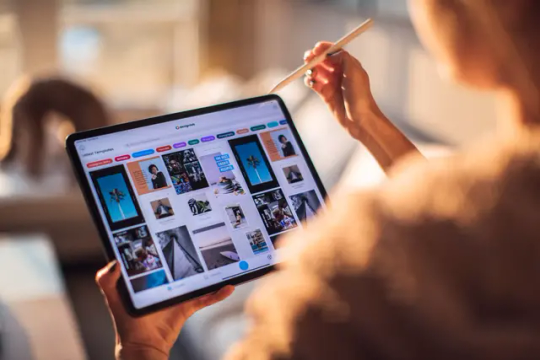
In the digital age, technology has revolutionized every aspect of the fashion industry, including the design process. Digital tools have become indispensable for fashion designers, offering innovative solutions for sketching, pattern-making, prototyping, and more. In this blog post, we'll explore the transformative impact of digital tools in fashion design and how IIFD equips students with the skills and knowledge to leverage these tools effectively.
Sketching and Illustration Software:
Digital sketching and illustration software have streamlined the design process, allowing designers to create detailed sketches and renderings with precision and ease. Programs like Adobe Illustrator and Adobe Photoshop offer powerful tools for creating digital sketches, exploring color palettes, and experimenting with design variations. At IIFD, students learn how to use these software applications to bring their design concepts to life digitally, refining their ideas and communicating their vision effectively.
3D Modeling and Virtual Prototyping:
Advancements in 3D modeling software have revolutionized the way fashion designers conceptualize and develop their designs. With 3D modeling tools like CLO, Marvelous Designer, and Browzwear, designers can create virtual prototypes of garments, visualize how fabrics drape and move, and simulate the entire design process digitally. This allows designers to iterate quickly, experiment with different design elements, and minimize material waste. At IIFD, students receive training in 3D modeling software, enabling them to create realistic virtual prototypes and bring their designs to life in a digital environment.
Pattern-making and CAD Software:
Traditional pattern-making techniques have been supplemented by Computer-Aided Design (CAD) software, which allows designers to create and modify patterns digitally. CAD software like Optitex, Lectra, and Gerber enables designers to draft, grade, and manipulate patterns with precision, saving time and reducing errors. At IIFD, students learn how to use CAD software to develop custom patterns, optimize garment fit, and streamline the production process, preparing them for careers in the fashion industry.
Digital Textile Design:
Digital textile design has transformed the way designers create and manipulate patterns, prints, and textures for fabrics. Designers can use software like Adobe Photoshop and Adobe Illustrator to create intricate textile designs, experiment with color combinations, and visualize how patterns will appear on garments. Additionally, advancements in digital printing technology have made it possible to produce high-quality, customizable fabrics on-demand. At IIFD, students explore digital textile design techniques, learning how to create original prints and patterns that reflect their unique design aesthetic.
Collaboration and Communication Tools:
In addition to design software, digital tools facilitate collaboration and communication among fashion design teams, suppliers, and manufacturers. Project management platforms like Trello and Asana help teams coordinate tasks, track progress, and manage deadlines effectively. Additionally, communication tools like Slack and Zoom enable designers to collaborate remotely, share feedback in real-time, and stay connected with colleagues across the globe. At IIFD Kolkata, students gain experience using these collaboration tools, preparing them for the collaborative nature of the fashion industry.
Conclusion:
Digital tools have revolutionized the fashion design process, offering designers unprecedented opportunities for creativity, efficiency, and collaboration. At IIFD, we recognize the importance of equipping students with the skills and knowledge to leverage these tools effectively. Through hands-on training, industry-relevant curriculum, and state-of-the-art facilities, we empower students to embrace innovation, explore new possibilities, and thrive in the dynamic world of fashion design. Join the best Fashion Designing College in Kolkata like IIFD Salt lake Kolkata and unlock your potential to shape the future of fashion with digital tools.
#IIFD Kolkata#IIFD#Fashion Design#Fashion Design Education#Fashion Education#Fashion Designing#education#careers#fashion design courses#fashion designing courses#fashion design college#fashion desingers
0 notes
Text
Fashion Designing: Courses, Education, and Beyond

Fashion design is a captivating blend of creativity, innovation, and craftsmanship that has the power to shape trends, influence cultures, and define identities. Whether you're drawn to the allure of haute couture or the excitement of streetwear, pursuing a career in fashion design offers endless possibilities for self-expression and artistic fulfillment.
In this blog, we'll explore the multifaceted world of fashion designing, from courses and education to the limitless opportunities that await beyond the classroom, with insights from the renowned IIFD - Indian Institute of Fashion & Design in Kolkata, West Bengal guiding the way.
Embracing Fashion Design Courses:
Fashion designing courses serve as the cornerstone for aspiring designers to hone their skills, explore their creativity, and lay the foundation for a successful career in the industry. From diploma programs to undergraduate degrees, these courses offer a comprehensive curriculum covering design theory, garment construction, textile science, illustration, and more. At IIFD Kolkata, our fashion designing courses are crafted to provide students with a blend of theoretical knowledge and practical skills, preparing them to thrive in the competitive world of fashion.
The Art of Fashion Education:
Fashion education extends beyond the classroom, encompassing workshops, seminars, guest lectures, and industry interactions that provide students with invaluable insights and experiences. At IIFD Kolkata, we believe in the importance of experiential learning, offering opportunities for students to engage with industry professionals, participate in fashion shows, and collaborate on real-world projects. By immersing themselves in the vibrant fashion ecosystem of Kolkata, our students gain hands-on experience and industry exposure that prepares them for the challenges and opportunities that lie ahead.
Navigating Career Paths:
The field of fashion design offers a myriad of career paths for graduates, ranging from working as designers for renowned fashion houses to launching their own labels or pursuing careers in fashion merchandising, styling, or marketing. At IIFD Kolkata, we empower our students to explore their interests and passions, providing guidance and support as they navigate their career paths. Our industry-aligned curriculum, career counseling services, and industry collaborations equip students with the knowledge, skills, and connections they need to pursue their dreams and succeed in the ever-evolving world of fashion.
Beyond the Runway: Exploring Opportunities:
Beyond traditional career paths, the world of fashion offers a multitude of opportunities for creative expression and entrepreneurial ventures. From freelance designing and consulting to blogging, styling, and fashion entrepreneurship, there are endless avenues for fashion enthusiasts to carve out their niche and make their mark. At IIFD Kolkata, we encourage our students to think outside the box and embrace innovation, empowering them to pursue their passions and create their own opportunities in the dynamic landscape of fashion.
Conclusion:
Fashion designing is not just a career - it's a lifestyle, a passion, and a journey of self-discovery. By pursuing fashion designing courses, embracing experiential learning, navigating career paths, and exploring opportunities beyond the runway, aspiring designers can embark on a fulfilling and rewarding journey in the world of fashion. At IIFD Kolkata, we're committed to nurturing the next generation of fashion leaders, providing them with the education, skills, and support they need to thrive in this exciting industry. Contact us today to learn more about our fashion designing courses and take the first step towards turning your passion for fashion into a successful career.
Ready to embark on a journey in fashion designing? Join the best Fashion Design College in Kolkata, IIFD Kolkata @iifdkolkata and unlock your creative potential. Contact us today to learn more about our fashion designing courses and take the first step towards a fulfilling career in the dynamic world of fashion.
#careers#education#fashion#iifd#iifd kolkata#fashion design#fashion designing#fashion design education#fashion education#educate yourself
0 notes
Text

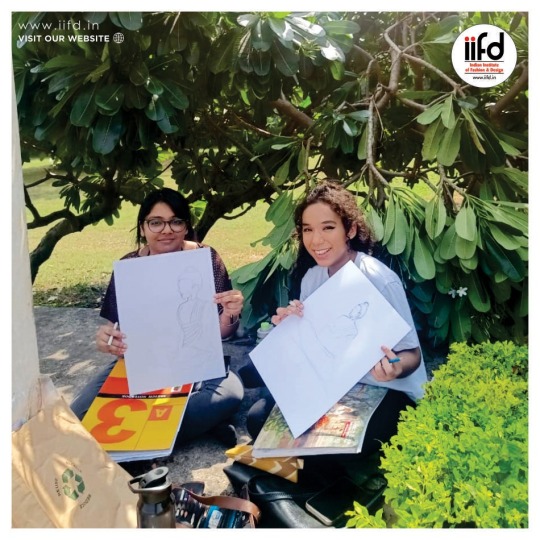
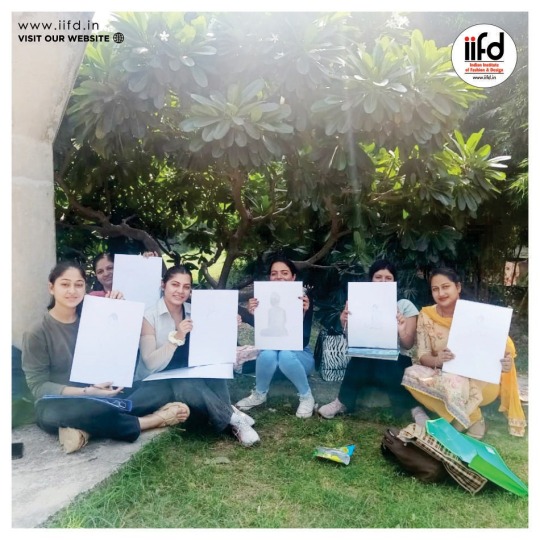

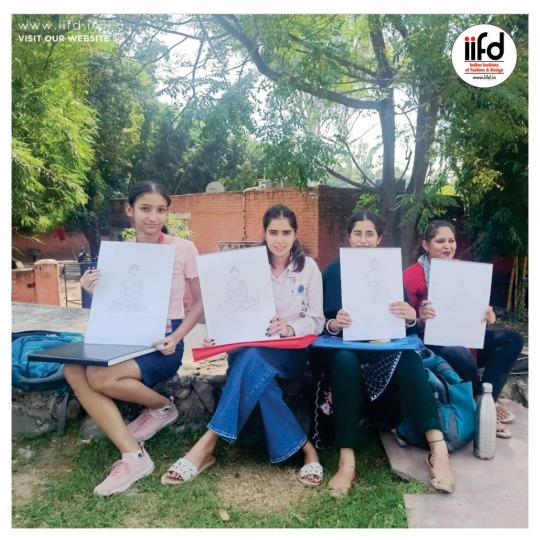

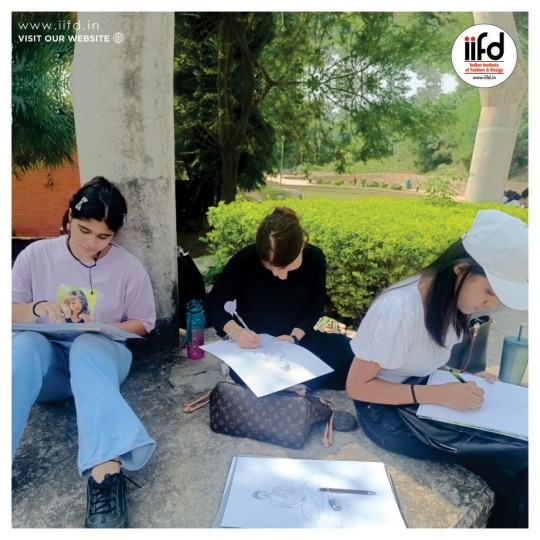

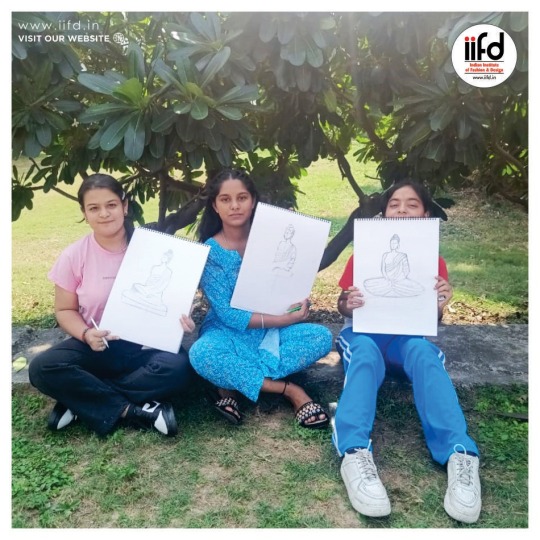

Outdoor study
Breathing life into art with every stroke!
Our talented IIFDians are on an outdoor study session, capturing the beauty of nature through captivating still-life sketching. Stay tuned to witness their artistic journey unfold!
#outdoor study#outdoor studies#outdoor learning#fashion design students#iifd#iifd chandigarh#fashion design education#fashion#Chandigarh#sketching
0 notes
Text

FIDA Design School: Empowering Creativity, Careers, and Global Vision in Fashion Education.
1 note
·
View note
Text
From Concept to Collection: Strategies for Managing a Fashion Line
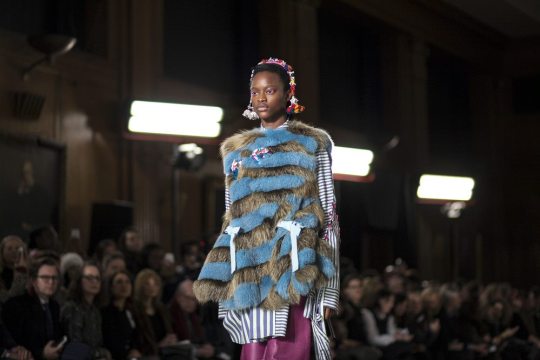
In the world of fashion, bringing a concept to life and creating a cohesive collection is a multi-faceted process that demands creativity, precision, and effective management. Managing a fashion line involves a range of tasks, from designing and production to marketing and distribution. In this article, we'll explore the essential strategies to guide you from the initial concept to a successful fashion collection.
Conceptualization and Design
The journey of a fashion line begins with an idea. It could be inspired by a theme, a specific style, or a unique concept. Start by sketching your ideas, creating mood boards, and gathering inspiration from various sources. Remember, the key to a successful collection is a strong and cohesive concept that runs through every piece.
Research and Market Analysis
Before you delve into production, it's crucial to conduct thorough research and market analysis. Understand your target audience, their preferences, and the current fashion trends. Identify gaps in the market that your collection can fill. This research will help you tailor your designs to meet the demands of your intended customers.
Budgeting and Financial Planning
Managing a fashion line involves substantial financial considerations. Create a detailed budget that accounts for design and production costs, marketing expenses, overhead, and other financial aspects. Staying on top of your budget is crucial to the long-term success of your collection.
Sourcing Materials and Production
Selecting the right materials is a pivotal aspect of creating a successful fashion line. Partner with reliable suppliers and manufacturers who can provide the quality materials you need. Ensure that your production process is efficient and maintains high standards to meet the demands of your collection.
Quality Control and Testing
Rigorous quality control is essential to maintaining the integrity of your fashion line. Regularly inspect your pieces for any defects or inconsistencies. Test your designs to ensure they stand up to wear and tear. Consistently high-quality products are key to establishing a strong brand reputation.
Branding and Marketing
Once your collection is ready, it's time to promote it to your target audience. Develop a strong brand identity and marketing strategy. Utilize social media, websites, and partnerships to create buzz around your fashion line. Effective branding and marketing can significantly impact your collection's success.
Distribution and Sales Channels
Decide on the distribution channels for your fashion line. Will you sell directly to consumers through your website, collaborate with retailers, or explore other options? Each channel has its own requirements, so choose those that align with your collection's goals.
Inventory Management
Efficient inventory management is crucial for both cost control and ensuring you meet customer demand. Utilize inventory software and strategies to track stock levels and make informed decisions regarding restocking or discontinuing specific items.
Customer Feedback and Adaptation
Listen to your customers. Collect feedback and reviews on your fashion line. Use this information to adapt and improve your designs and offerings. Customer satisfaction and loyalty are essential to building a successful brand.
Sustainability and Ethical Practices
Fashion consumers are increasingly concerned about sustainability and ethical practices. Consider how you can incorporate sustainable materials and ethical production methods into your fashion line. This not only appeals to conscious consumers but also contributes to the long-term health of the fashion industry.
Managing a fashion line is a multifaceted endeavor, requiring a combination of creativity and business acumen. By conceptualizing your vision, conducting research, managing your finances, producing quality items, and marketing effectively, you can navigate the journey from concept to a thriving fashion collection.
Indian Institute Of Fashion & Design- IIFD is the Best Fashion Design College in India. IIFD is The most popular and Leading Fashion Design Institute which offers professional training in Fashion Design, textile design, and interior design Courses in India. IIFD is committed to excellence, creation, and growth for their students through ongoing educational activities, and live sessions, They offer an industry-ready curriculum that helps you improve your practical knowledge and skills.
Remember, the key to success lies in meticulous planning, dedication, and a commitment to delivering high-quality fashion that resonates with your target audience. With the right strategies and a passion for your craft, your fashion line can make a significant impact in the ever-evolving world of fashion.
#fashion design tips#fashion education#fashion design education#fashion careers#education#iifd#iifd chandigarh#fashion design institute#fashion designing courses
0 notes